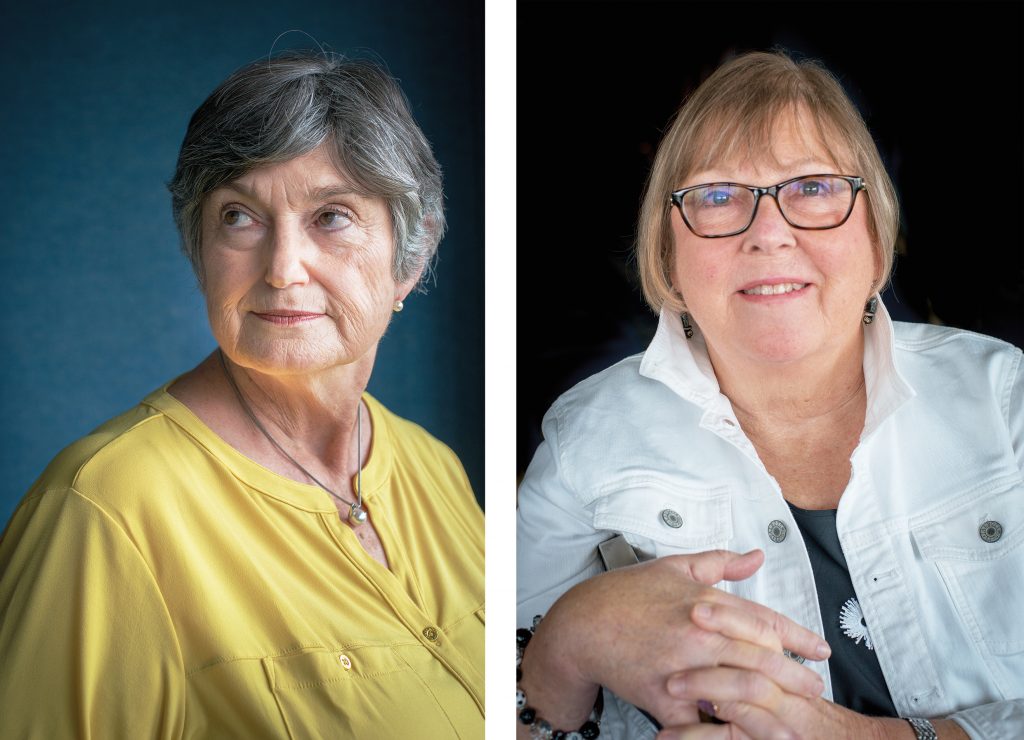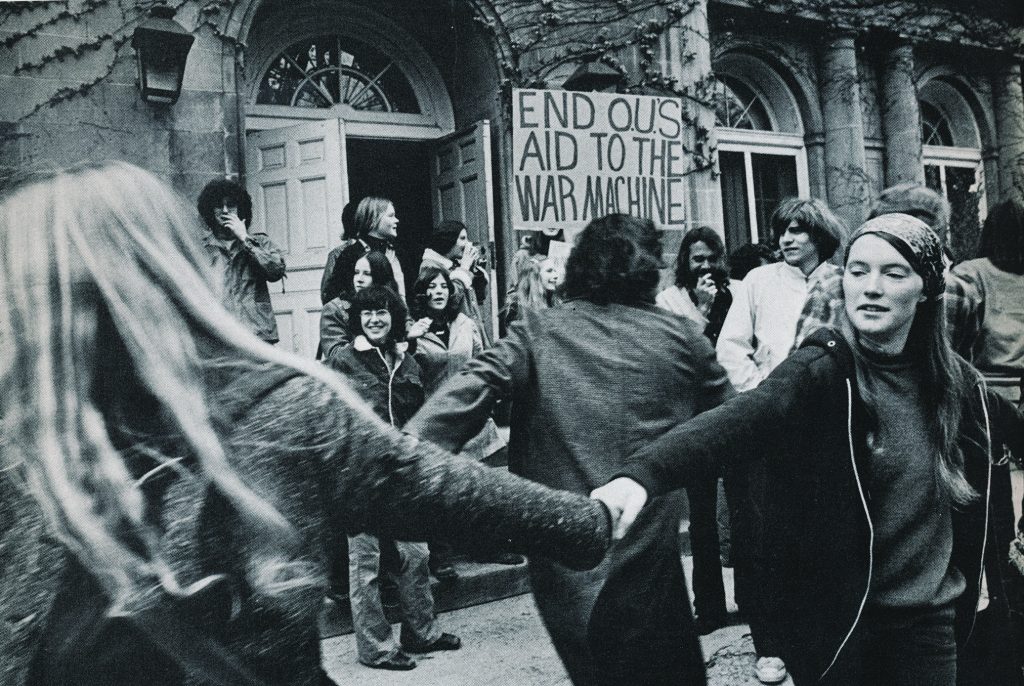College campuses surge with activism and dialogue when national issues of the day arise, and Ohio University is no exception. During the late 1960s and early 1970s, unrest regarding race, gender, and war shook the small college town in the Appalachian foothills. This tumult, a microcosm of American society at the time, spurred dramatic change toward inclusivity and altered the lives of OHIO students then and today.
This era of disruption and growth was of particular interest to two-time OHIO graduate Frank Robinson, MA ’93, PHD ’00, whose dissertation explored issues facing women at OHIO in the 1960s-70s by interviewing 38 individuals who lived them.
Today, 50 years since their experiences on campus and 20 years since Robinson’s interviews, three of his subjects—all of whom played unique roles in the feminist movement at OHIO—reflected on the still unfinished arc of women’s progress.
“We thought when we opened the door it would all work out, but we underestimated how deep the resentment is toward strong women,” says Beverly Jones, BSJ ’69, MBA ’75, the first female admitted to OHIO’s MBA program. “There are still a lot of men who don’t like to see women succeed, and in some cases the women in their lives feel the same way.”

After leaving OHIO a more equitable institution than she found it, Beverly Jones has pursued a career as an attorney and, more recently, an expert in leadership coaching in Washington, D.C. Photo by Susana Raab, MA '10
During the late ’60s, gendered rules of conduct on campus were barriers for equal treatment. For instance, there were curfew hours and dress codes, and women were permitted to smoke only so long as they remained seated. Of course, none of these rules applied to men.
The standards were so different for men and women, and no one questioned it,” Anne Goff, BA ’69, MED ’71, recalled with Robinson in 1998. “It was silly, but I don’t remember being too enraged over it.
En Loco Parentus, the idea that the University act in the place of parents to protect its students, was accepted at the time. Jones suggested that it was OHIO’s intent to prepare young women for the pressure they would be under in the workforce.
These rules for behavior were very common in adult life,” Jones says. “Women had to have a certain level of polish in order to even get into the room, and employers were looking for someone who knew how to be a lady.
Change was imminent, however. Jones and Goff founded the Women’s Information Group (WIG), which gathered young women who had almost no female role models in positions of leadership on campus, to discuss women’s issues.
While women across campus eagerly joined to civilly dialogue about books and theories, the assembly seemed to make some men on campus uneasy.

Left: After a 24-year career with the H. Lee Moffitt Cancer Center & Research Institute, where she was vice president of research, Anne Goff lives in Hendersonville, North Carolina. Right: Post alumna Susan Reimer received the E.W. Scripps School of Journalism’s L.J. Hortin Distinguished Alumni Award in 2016 after retiring from The Baltimore Sun, where she reported for 36 years. Photos by Susana Raab, MA '10
“They would look at us as a guerilla group; it amused us terrifically,” Jones remembered in 1998. “I knew there were guys waking up in the middle of the night thinking, ‘Oh my God, what are these women going to do?’ It was all bluff really—but perception is reality. We recognized it as a tool we could use to get something symbolic done fast.”
Jones sought change at the highest levels of the administration, eventually publishing at President Sowle’s request the Report on the Status of Women at Ohio University, 1972, which documented many of the inequalities of the time and influenced significant changes on campus: increased funding for women’s athletics, re-admittance of women to the marching band, and changes in attitude toward women students, faculty, and staff.
Today, President M. Duane Nellis has formed the Presidential Commission on the Status of Women, which began meeting this fall, to ensure that gender diversity and women's issues remain at the forefront of the University's mission.
Susan Reimer, BSJ ’73, covered all sides of women’s issues as a writer for The Post. When she started her career as a sports writer just as women were first allowed to conduct interviews in the locker room, she found her own tactics for breaking through that industry’s gender barriers.
“Clothing is camouflage,” Reimer says. “[In my role], the players resented our being there; so, I dressed like a boy. That way I could be mistaken for just another guy or at least it would be clear that there was no chance that I was there to flirt.”

Anti-war rally, 1972. Photo courtesy of Ohio University Mahn Center for Archives & Special Collections
All women engaged with the feminist movement differently. Some found the companionship and support of likeminded women overruled feelings of insecurity or fear. Others were simply wired for the resiliency that the spirit of feminism demands.
“I’ve always felt like I belonged, like I deserved a seat at the table,” Reimer says. “I’ve lived with my elbows out, and I never allowed a feeling of second-class citizenship to permeate me.”
Yet today, as these three OHIO women reflect on half a century of progress and setbacks, the importance of unity and support remains clear.
“When we started reaching out to others [to form WIG], it was transformational,” says Goff. “You have to find a collection of people that will understand where you are coming from and have your back.”
Feature photo: Sit-in, 1970. Photo courtesy of Ohio University Mahn Center for Archives & Special Collections



